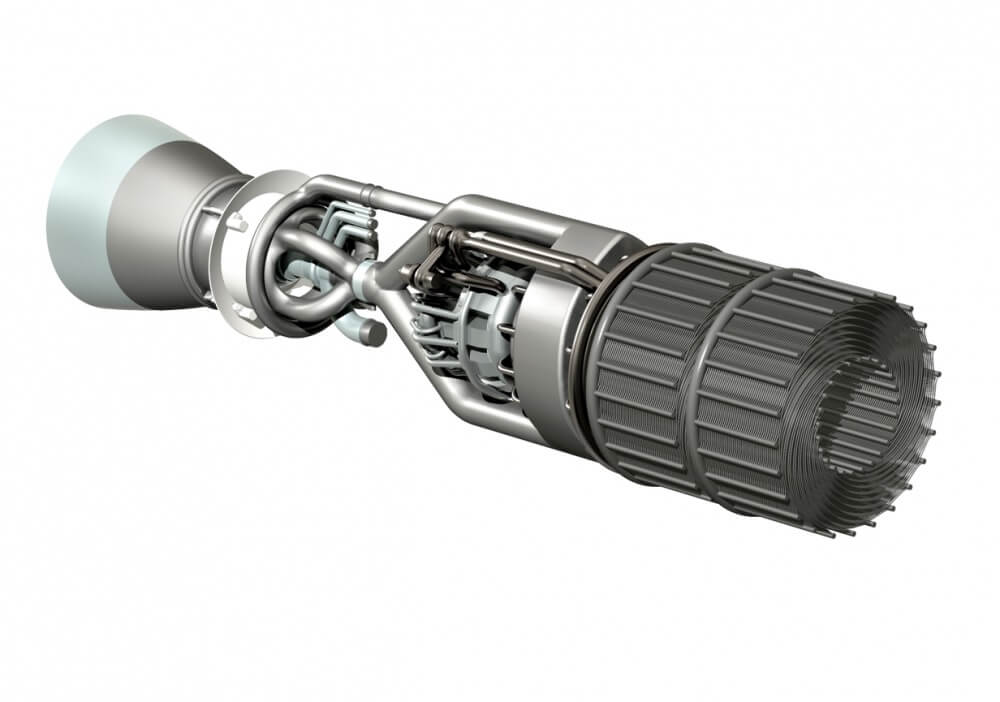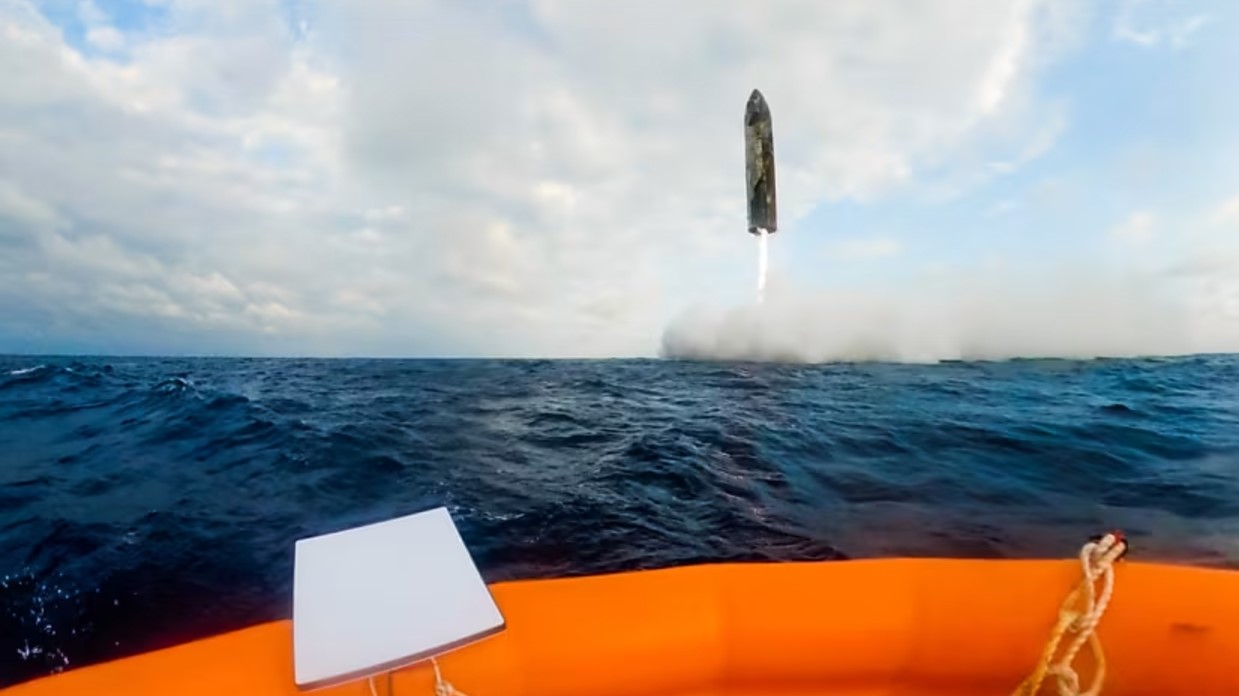US aerospace giant Boeing, via its HorizonX investment firm, has invested in the UK hypersonic propulsion development firm Reaction Engines Limited. Boeing HorizonX Ventures participated in this US$37.3 million Series B funding round alongside Rolls-Royce and BAE Systems.

Reaction Engines’ revised its SABRE engine to a smaller single nozzle design which will have more applications. Courtesy: Reaction Engines Limited
Reaction Engines is developing its Synergetic Air-Breathing Rocket Engine (SABRE), a hybrid engine blending jet and rocket technology that is capable of Mach 5 in air-breathing mode and Mach 25 in rocket mode for space flight. The core breakthrough is that Reaction Engines has developed an ultra-lightweight heat exchanger, which allows very hot air entering an inlet to be cooled fast enough to be injected into a compressor and then to a combustion chamber of the engine. Having proven the heat exchanger, the firm is currently building a prototype of the engine, which could be used for both orbital launch vehicles and hypersonic transport aircraft, as well as cruise missiles.
“As Reaction Engines unlocks advanced propulsion that could change the future of air and space travel, we expect to leverage their revolutionary technology to support Boeing’s pursuit of hypersonic flight,” said Steve Nordlund, vice president of Boeing HorizonX.
“Boeing is a world-leader in many fields, bringing invaluable expertise in hypersonic research and space systems. I am thrilled and honoured that Boeing HorizonX has chosen Reaction Engines as its first UK investment,” said Mark Thomas, CEO of Reaction Engines and former Chief Engineer at Rolls-Royce. “This is a very exciting step that will contribute to our efforts to develop a commercial technology business and accelerate opportunities to further the future of air and space travel through SABRE technology.”
The revolutionary engine technology was developed by the now retired rocket scientist Alan Bond to power a proposed reusable single-stage-to-orbit reusable rocket plane called Skylon. In an echo of the struggle that Sir Frank Whittle had with jet engine development during the 1930s, Reaction Engines has found funding its research very difficult since its formation in 1989. It was only during the 2010s that the UK government and the European Space Agency (ESA) finally gave it significant support. Subsequently BAE Systems (the former British Aerospace) made its first investment in the firm to take a 20% holding. The Boeing HorizonX Ventures investment portfolio is made up of companies specialising in technologies for aerospace and manufacturing innovations, including autonomous systems, energy storage, advanced materials, augmented reality systems and software, machine learning, hybrid-electric propulsion and Internet of Things connectivity.
Post Script: The writer of this piece, David Todd, is a small but original investor in Reaction Engines Limited in the early 1990s. No doubt your correspondent’s very small shareholding (the second smallest of the shareholders I think) will be even further diluted by this move! Still, you could say that he foresaw the potential of this technology all those years ago, and well before all these Johnny-come-latelies. According to SABRE’s inventor, Alan Bond, who should really have received a knighthood by now, he and his colleague Richard Varvill used your correspondent’s investment cash to visit US rocket firms in the early 1990s which helped cement some of their ideas.
One final thing. ESA deserves credit for giving funding to the development stage of the SABRE project. But now it seems that a US aerospace firm is going to be a major beneficiary of this investment. The main reason for this is that France, with help from Germany and Italy, remains in control of Europe’s space launcher programme and was unwilling to “jump a step” to new a British-designed reusable launch technology. It decided instead to invest in the very (perhaps too) conventional expendable Ariane 6.




